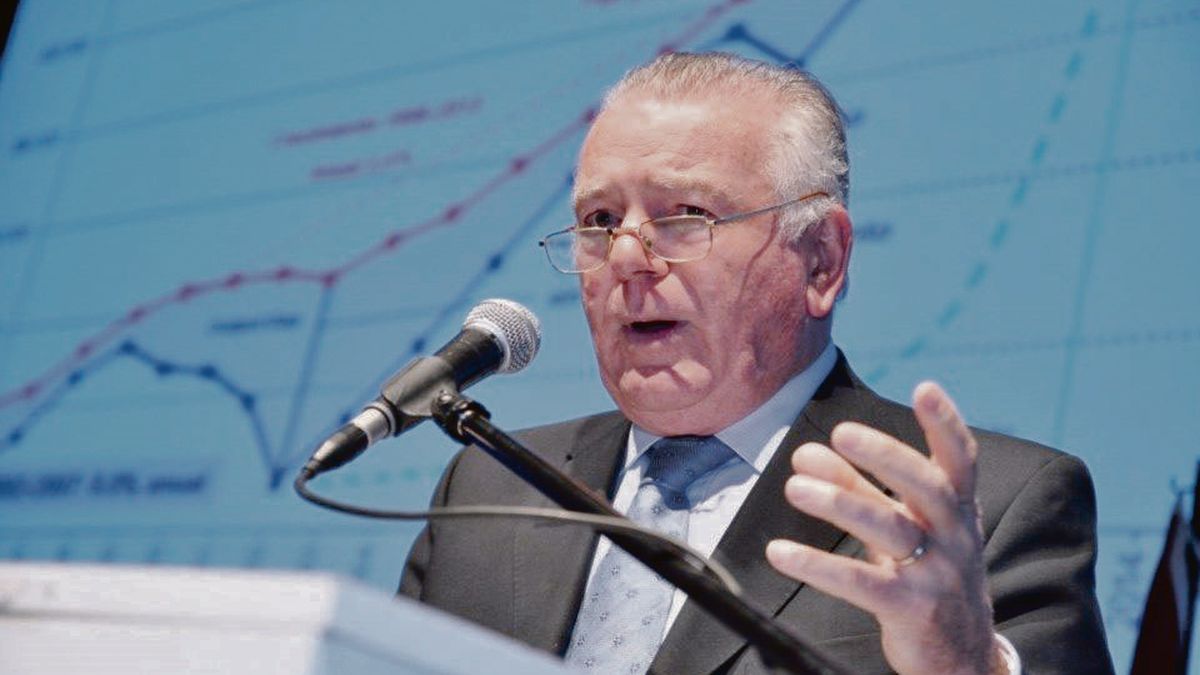The Minister of Economy, Luis Caputo and the president of the Central Bank (BCRA), Santiago Bausillimet with the banks to present a sort of exchange of BCRA bonds for Treasury bonds, diverting the BCRA debt to Treasury debt. The measure was announced on Friday within the framework of the launch of what the Government calls the “second stage” of the economic stabilization plan, whose axis will be “zero monetary emission“. For one of the most respected economists, Orlando Ferreres, this measure was a “Bonex plan” in a new version.
“On Friday, a kind of Bonex plan was announced for the banks, with a different name, but the debt is transferred from the BCRA to the Treasury. That is what the markets did not like. The Government thought of a better reaction with the release of the Bases law and the Fiscal Package. The banks were not very happy. “I saw that it was an unavoidable obligation,” he explained this morning on Radio 10.
“I see the bankers worried and they will find alternatives that will be difficult to implement as well,” he added. On the risk of the measure for deposits, he clarified that “not like last time” but there is a risk.
What the Government said about the Bausilli-Caputo proposal
“A letter will be issued to carry out the same thing as was done with the passes. Now, the corresponding regulations of the BCRA and the Treasury must be issued,” he explained to Ambit a source from the banking sector. He explained that the government’s idea is “to move towards not issuing bonds in order to strengthen the peso,” as Caputo told them during the meeting.
“Nothing changes for the banks and the risk does not increase despite being Treasury debt “Because the BCRA keeps the passes to pay the bills,” added the source when asked how the change in the security level of this mechanism affects the solidity of the financial system.
Caputo and Santiago Bausili.png
The economic team’s announcement on Friday generated more doubts than certainties in the market
The Letter of Monetary Reprogramming
In the same sense, Claudio Cesario, president of the Argentine Banking Association (ABA)he explained that “what they explained today to the financial institutions is in line with the work of cleaning up the accounts of the BCRA“. And he confirmed that, now, the sector is “waiting for the regulations of the Ministry of Economy and the Central Bank that complete the technical issues.”
“Regarding the Monetary Reprogramming Letter, they reiterated that it will be issued by the Treasury but that the resulting pesos will be deposited in the BCRA.which is, as always, the one that “guarantees” the liquidity of the system. In other words, what will exist is a backup account for the issue of the Letter. The Treasury will not spend that money, but will keep it deposited in the BCRA,” Cesario specified in this regard.
He also pointed out that “this is an operational change that allows the BCRA to manage the monetary policy rate independently of the State’s financing needs.” Cesario added that they also pointed out that the collection flows are going well and that they are not going to issue pesos, so there will be a gradual appreciation of the currency and it will be within the framework of the competition between the peso and the dollar.
The Treasury pledged to ensure the soundness
The decision that has been made is that These liabilities are transferred to the Treasurywhich constitutes, according to Caputo, “a sincerity” of the situation, since they had their origin in the imbalance of the Treasury accounts. And he stressed that, by passing on a greater debt to the Treasury, it “it is doubly committed” and will require “very responsible” management.
The downside, Bausili explained, is that “a very important autonomy is restored to the Central Bank” since it will be able to “set the (interest) rate without compromising its balance sheet”with which he considered that the entity will have more tools to focus on its mission, which “is to eradicate inflation.”
Bausili also said that work is being done with the entities on the issue to return full management of monetary policy to the BCRA, without depending on a third party for the creation of money, as happens with puts. The official preferred not to give details since he is in talks with the entities, but he said that “We are very confident that we will find solutions.”
In response to a question from AmbitBausili stated that Basically, there will be a sterilization mechanism similar to the passes, with a monetary regulation letter that will be administered by the Central Bank but that will correspond to the Treasury.The head of the monetary entity reported that meetings with financial institutions will begin on Monday and that acceptance of the Letter is “voluntary.”
Source: Ambito




